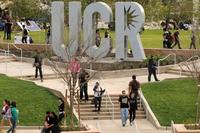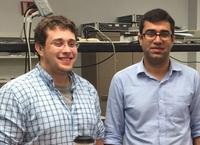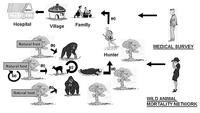-
DHS cancels acquisition of BioWatch’s Generation 3 technology
Owing to concerns about BioWatcheffectiveness and high cost, DHS has canceled plans to install an automated technology meant to speed the 24-hour operations of the program, the nation’s system for detecting a biological attack.ASeptember 2012 GAO report estimated that annual costs to operate the Generation 3 technology would be “about four times more” than the existing BioWatch system.
-
-
New bug sensor saves crops, people

For hundreds of years humans have attempted to kill unwanted insects. While some blanket methods have been successful, they can be costly and create environmental problems. A new sensor developed by UC Riverside researchers aims to change that by counting and classifying the insects so that the substance used to eradicate the harmful insects can be applied on a precision targeted level. The inexpensive wireless sensors have 99 percent accuracy, and they are expected to have applications fighting insect-borne diseases, such as malaria, and insects that damage crops.
-
-
1918 pandemic flu virus mystery solved

Just as the world was recovering from the devastation of the First World War, another killer swept across the globe. A deadly flu virus attacked more than one-third of the world’s population, and within months had killed more than fifty million people — three times as many as the war — and had done it more quickly than any other illness in recorded history. Until now, the origin of the 1918 pandemic flu virus and its unusual severity have vexed health experts. A new study not only sheds light on the devastating 1918 pandemic, but could also improve vaccination strategies, and pandemic prevention and preparedness.
-
-
First large-scale dengue vaccine efficacy study achieves primary clinical goals
Dengue is a threat to nearly half the world’s population, and is a pressing public health priority in many countries in Asia and Latin America where epidemics occur. Sanofi Pasteur, the vaccines division of Sanofi, yesterday announced that the first of two pivotal Phase III efficacy studies with its dengue vaccine candidate has achieved its primary clinical endpoint. The efficacy study showed a significant reduction of 56 percent of dengue disease cases. The study involved more than 10,000 volunteers from Asia.
-
-
Birds in and around Chernobyl's exclusion zone adapting to ionizing radiation

Birds in the exclusion zone around Chernobyl are adapting to — and may even be benefiting from — long-term exposure to radiation, ecologists have found. The study is first evidence that wild animals adapt to ionizing radiation, and the first to show that birds which produce most pheomelanin, a pigment in feathers, have greatest problems coping with radiation exposure.
-
-
Vermont mandates labeling of foods containing GMOs
On Wednesday, legislators in Vermont passed a billrequiring the labeling of foods which contain genetically modified organisms (GMOs), making the state the first in the United States to pass such a law without contingencies. Proponents of the law, and of similar attempts across the country, hailed the legislative approval as a victory. About twenty other states have pending measures regarding labeling GMO-based foods, but the biotech and food industries have been lobbyingfederal legislators to prevent such measures.
-
-
PathSensors introduces portable pathogen identifier system

Baltimore, Maryland-based PathSensors, Inc. has introduced the portable Zephyr Pathogen Identifier system. The company says it delivers rapid, reliable detection of bacteria, virus, and toxins in powder and liquid samples in minutes. The Zephyr Identifier uses CANARY (Cellular Analysis and Notification of Antigen Risks and Yields) technology, which is licensed from the MIT-Lincoln Laboratory.
-
-
Emergency water treatment guidelines questioned
During floods and other emergencies, treating water for drinking is a must, but how to do it is up for debate. The Environmental Protection Agency’s (EPA’s) recommendations for treating water after a natural disaster or other emergencies call for more chlorine bleach than is necessary to kill disease-causing pathogens and are often impractical to carry out, a new study has found.
-
-
Detecting and defeating radiological threats
Brookhaven National Laboratory’s Radiological Assistance Program (RAP) team works to stay ahead of any radiological threats by using many detection tools that have become increasingly sophisticated and user-friendly. During a deployment, researchers and technicians with backgrounds in various aspects of radiological controls and analysis conduct field monitoring and environmental sampling, assessment, and documentation activities to help decision makers choose appropriate protective actions for the safety of both the public and first responders.
-
-
Court to decide a Minnesota’s “Buy the Farm” case
Minnesota’s “Buy the Farm” law is the center of a case set for trial later this week, in which developers of CapX2020, the region’s power grid improvement project, will contest a lawsuit by Cedar Summit Farm. The state law requires utilities building high-voltage power lines to buy out farms along the path of the power line if the affected landowners demand it. CapX2020 argues the farm does not meet the buyout criteria set in the law.
-
-
“Dressed” laser aims at clouds to induce rain, lightning

The adage “Everyone complains about the weather but nobody does anything about it,” may one day be obsolete if researchers further develop a new technique to aim a high-energy laser beam into clouds to make it rain or trigger lightning. The researchers work on surround the beam with a second beam to act as an energy reservoir, sustaining the central beam to greater distances than previously possible. The secondary “dress” beam refuels and helps prevent the dissipation of the high-intensity primary beam. Gaining control over the length of a filament would allow the creation of the conditions needed for a rainstorm from afar. People could thus artificially control the rain and lightning over a large expanse.
-
-
Amid controversy, Boston City council debates banning Level 4 Biolab
Boston has long been seen as “America’s Medical Capital,” but that may soon change if the city passes a measure to ban Level 4 Biolab disease research at Boston University’s National Emerging Infectious Diseases Laboratory – research which includes deadly and untreatable strains that could decimate an exposed urban population in the event of an accident or terrorist activity.
-
-
Pocket-sized anthrax detector aids global agriculture
Bacillus anthracis, the bacteria that causes anthrax, is commonly found in soils all over the world and can cause serious, and often fatal, illness in both humans and animals. The bacteria can survive in harsh conditions for decades. In humans, exposure to B. anthracis may occur through skin contact, inhalation of spores or eating contaminated meat. A credit-card-sized anthrax detection cartridge developed at Sandia National Laboratories and recently licensed to a small business makes testing safer, easier, faster, and cheaper.
-
-
Ebola outbreak highlights need for global surveillance strategies

According to the World Health Organization (WHO), the deadly Ebola virus can cause mortality rates up to 90 percent of those individuals who contract the disease. No cure or vaccine exists for Ebola hemorrhagic fever and public health officials are concerned about further spread of the virus in the region. A comprehensive review was published yesterday examining the current state of knowledge of the deadly Ebola and Marburg virus. The review calls for improved global surveillance strategies to combat the emergence of infectious diseases such as the recent outbreak of Ebola in West Africa that has claimed the lives of 122 people in the countries of Guinea and Liberia.
-
-
New MRSA superbug discovered in Brazil
Researchers have identified a new superbug that caused a bloodstream infection in Brazilian patients. The new superbug is part of a class of highly-resistant bacteria known as methicillin-resistant Staphylococcus aureus, or MRSA, which is a major cause of hospital and community-associated infections. The superbug has also acquired high levels of resistance to vancomycin, the most common and least expensive antibiotic used to treat severe MRSA infections worldwide. The most worrisome aspect of the discovery is that genomic analyses indicated that this novel vancomycin-resistant MRSA superbug belongs to a genetic lineage that is commonly found outside hospitals (designated community-associated MRSA).
-
More headlines
The long view
We Ran the C.D.C.: Kennedy Is Endangering Every American’s Health
Nine former leaders of the Centers for Disease Control and Prevention (CDC), who served as directors or acting directors under Republican and Democratic administrations, serving under presidents from Jimmy Carter to Donald Trrump, argue that HHS Secretary Roert F. Kennedy Jr. poses a clear and present danger to the health of Americans. He has placed anti-vaxxers and conspiracy theorists at top HHS positions, and he appears to be guided by a hostility to science and a belief in bizarre, unscientific approaches to public health.
